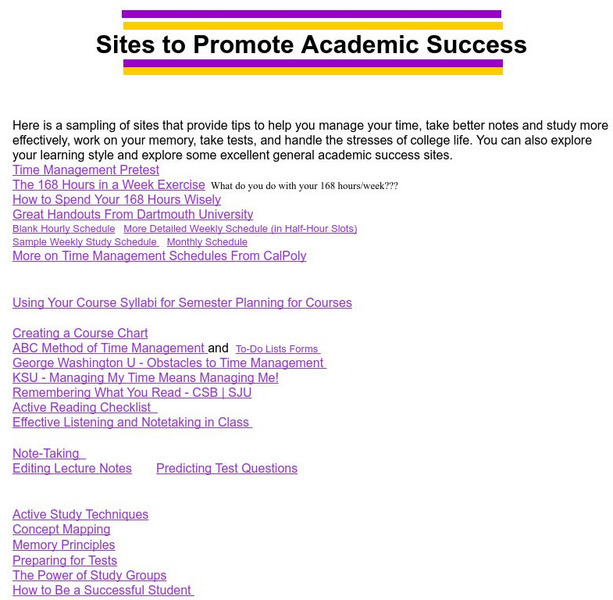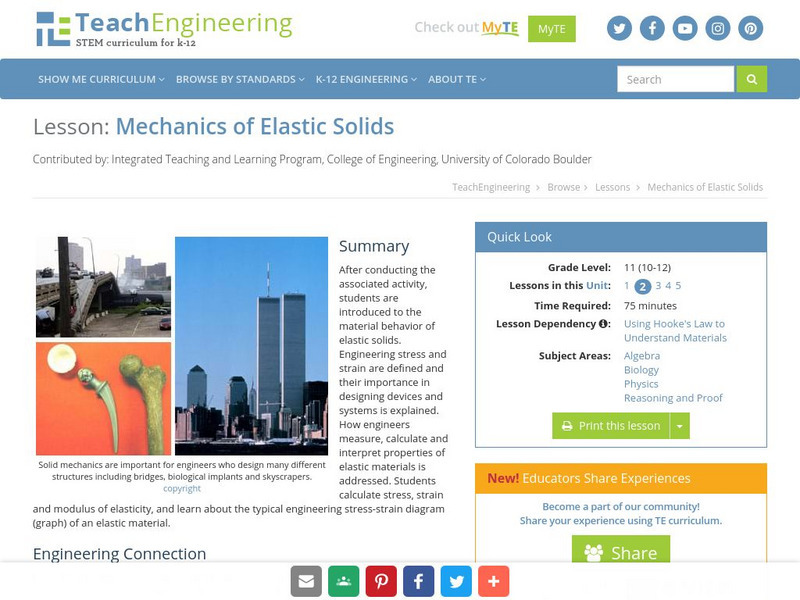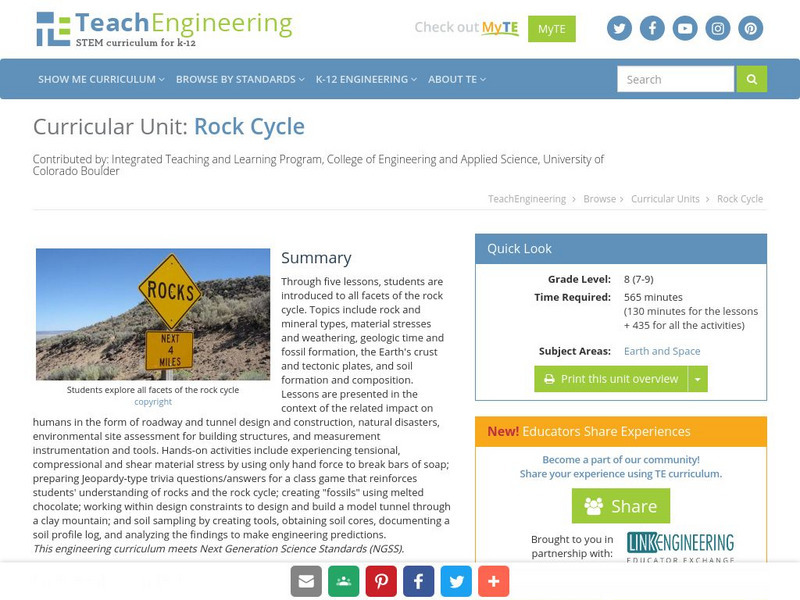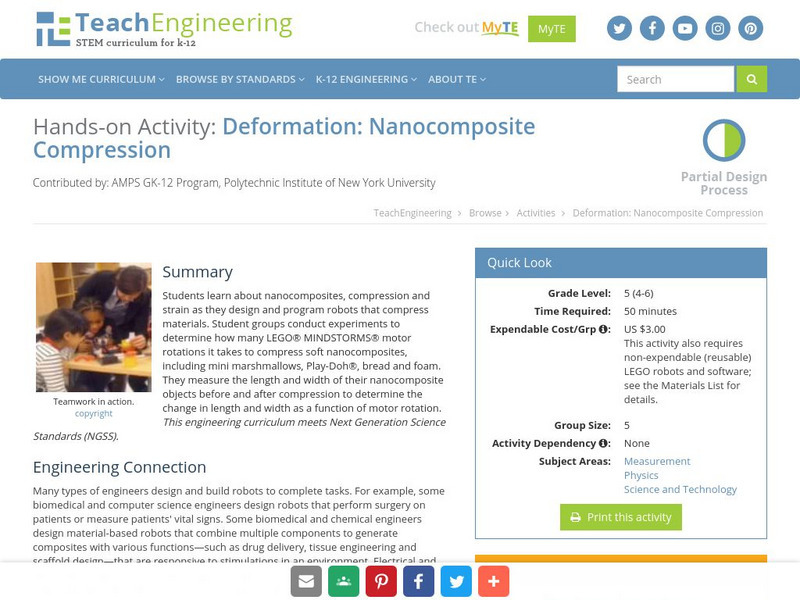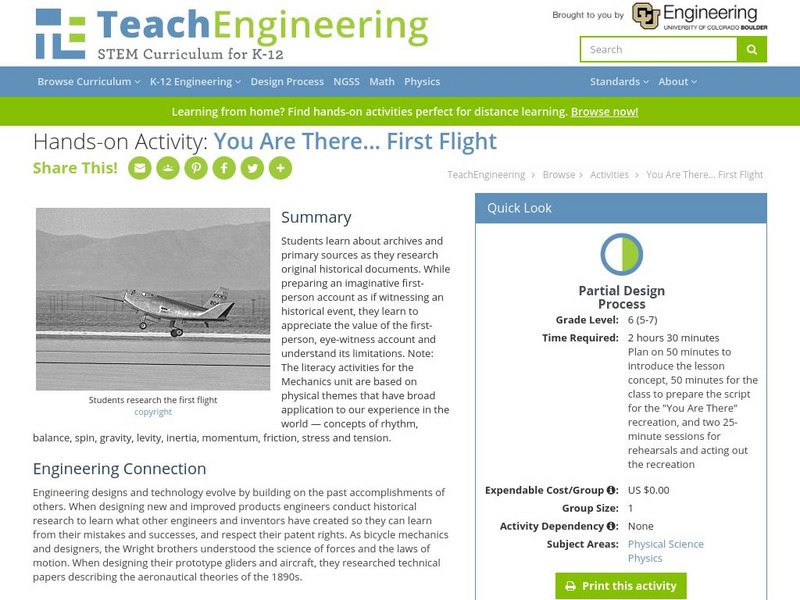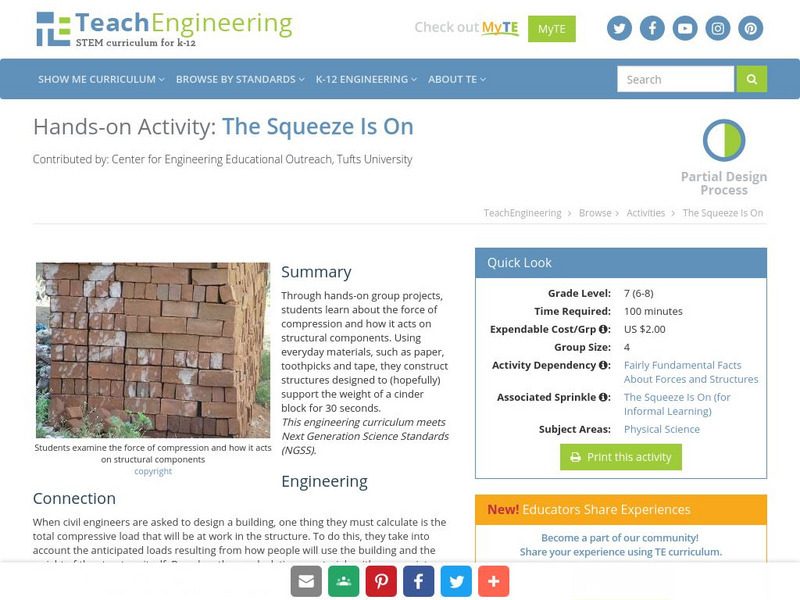Hi, what do you want to do?
TeachEngineering
Teach Engineering: Team Up!
Students explore the physical and psychological effect of stress and tension on human beings. They develop their observing, thinking, writing and teamwork skills by working on a group art project and reporting about it. They learn about...
TeachEngineering
Teach Engineering: Riding the Gravity Wave
Students write a biographical sketch of an artist or athlete who lives on the edge, riding the gravity wave, to better understand how these artists and athletes work with gravity and manage risk. Note: The literacy activities for the...
TeachEngineering
Teach Engineering: It Takes Two to Tangle
Students explore the theme of conflict in literature. They learn the difference between internal and external conflict and various types of conflicts, including self against self, self against other, and self against nature or machine....
TeachEngineering
Teach Engineering: The Big Mo
Momentum is not only a physical principle; it is a psychological phenomenon. Students learn how the "Big Mo" of the bandwagon effect contributes to the development of fads and manias, and how modern technology and mass media accelerate...
TeachEngineering
Teach Engineering: Couch Potato or Inertia Victim?
Students design a simple behavioral survey, and learn basic protocol for primary research, survey design and report writing. Note: The literacy activities for the Mechanics unit are based on physical themes that have broad application to...
TeachEngineering
Teach Engineering: Breaking Beams
Students learn about stress and strain by designing and building beams using polymer clay. They compete to find the best beam strength to beam weight ratio, and learn about the trade-offs engineers make when designing a structure.
National Association of Geoscience Teachers
Serc: Modeling Glacier Dynamics With Flubber
This hands-on activity describes glacier mass balance in a changing climate. Students make a glacier, construct a glacier valley, then run several tests with different values for valley slope, "flubber" temperature, and basal conditions...
Other
Metamorphic Rocks [Ppt]
Explains the different ways that metamorphic rocks can form. Looks at high temperature, high pressure, and chemically active fluids. Discusses structures created in metamorphic rocks by different forces and the classifications based on...
Other
University of Northern Iowa: Study Skills
Collection of web sites that provide tips to help you study more effectively, manage your time, take better notes, and handle the stresses of school life.
TeachEngineering
Teach Engineering: Mechanics of Elastic Solids
After conducting the associated activity, students are introduced to the material behavior of elastic solids. Engineering stress and strain are defined and their importance in designing devices and systems is explained. How engineers...
TeachEngineering
Teach Engineering: Rock Cycle
Through five lessons, students are introduced to all facets of the rock cycle. Topics include rock and mineral types, material stresses and weathering, geologic time and fossil formation, the Earth's crust and tectonic plates, and soil...
Science Buddies
Science Buddies: Do String Players Have Longer Left Fingers?
Physical activity is needed for maintaining normal bone strength and mass. But whether physical stress on finger bones during development leads to an increase in finger length, is something you will discover in this project not by...
TeachEngineering
Teach Engineering: Preconditioning Balloons
Students use balloons (a polymer) to explore preconditioning a viscoelastic material behavior that is important to understand when designing biomedical devices. They improve their understanding of preconditioning by measuring the force...
TeachEngineering
Teach Engineering: Deformation: Nanocomposite Compression
Students learn about nanocomposites, compression and strain as they design and program robots that compress materials. Student groups conduct experiments to determine how many LEGO MINDSTORMS NXT motor rotations it takes to compress soft...
TeachEngineering
Teach Engineering: Applying Hooke's Law to Cancer Detection
Students explore Hooke's law while working in small groups at their lab benches. They collect displacement data for springs with unknown spring constants, k, by adding various masses of known weight. After exploring Hooke's law and...
TeachEngineering
Teach Engineering: Viscoelasticity
Students are introduced to the concept of viscoelasticity and some of the material behaviors of viscoelastic materials, including strain rate dependence, stress relaxation, creep, hysteresis and preconditioning. Viscoelastic material...
University of Utah
University of Utah: Genetic Science Learning Center: Epigenetics
Videos, interactive activities, and articles explaining the influences that cause parts of the genome to be turned on and off. Learn how nutrition, behavior, stress and other factors determine gene expression.
TeachEngineering
Teach Engineering: You Are There, First Flight
Students learn about archives and primary sources as they research original historical documents. While preparing an imaginative first-person account as if witnessing an historical event, they learn to appreciate the value of the...
TeachEngineering
Teach Engineering: Wow! That Captures It!
Students learn how motion capture (mo-cap) technology enables computer animators to create realistic effects. They learn the importance of center of gravity in animation and how to use the concept of center of gravity in writing an...
TeachEngineering
Teach Engineering: Spin Me a Story
In a spin-off to studying about angular momentum, students use basic methods of comparative mythology to consider why spinning and weaving are common motifs in creation myths and folktales. Note: The literacy activities for the Mechanics...
TeachEngineering
Teach Engineering: Strong as the Weakest Link
To introduce the two types of stress that materials undergo - compression and tension - students examine compressive and tensile forces and learn about bridges and skyscrapers. They construct their own building structure using...
Khan Academy
Khan Academy: How Do I Deal With Frustration in a Positive Way?
Working through our frustration can help us grow our brains and it's also perfectly normal to get frustrated! This article explains four suggested steps for dealing with frustration.
Creative Science Centre
Creative Science Centre: A Simple Demonstration of Piezoelectricity
Piezoelectricity is an electrical effect that occurs when mechanical stress is applied to certain materials, e.g., quartz crystals, Rochelle salts, and barium titanate. The sound of a wrist watch alarm or a smoke detector is made by a...
TeachEngineering
Teach Engineering: The Squeeze Is On
Students will learn about the force of compression and how it acts on structural components through a hands-on group project. Using everyday products such as paper, toothpicks, and tape they will construct a structure that will support...












![Metamorphic Rocks [Ppt] PPT Metamorphic Rocks [Ppt] PPT](https://static.lp.lexp.cloud/images/attachment_defaults/resource/large/FPO-knovation.png)
